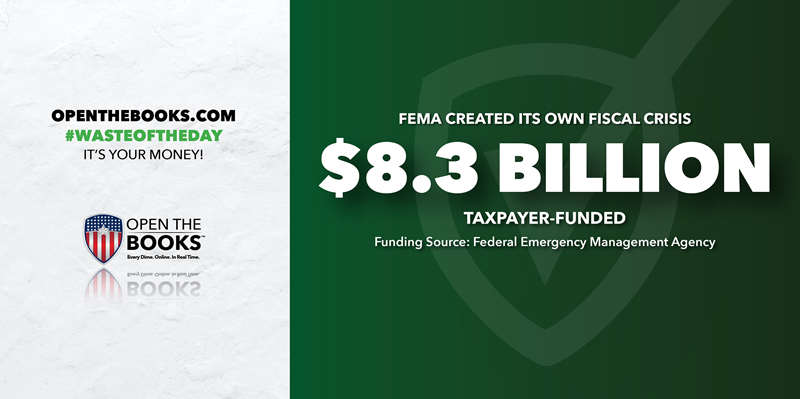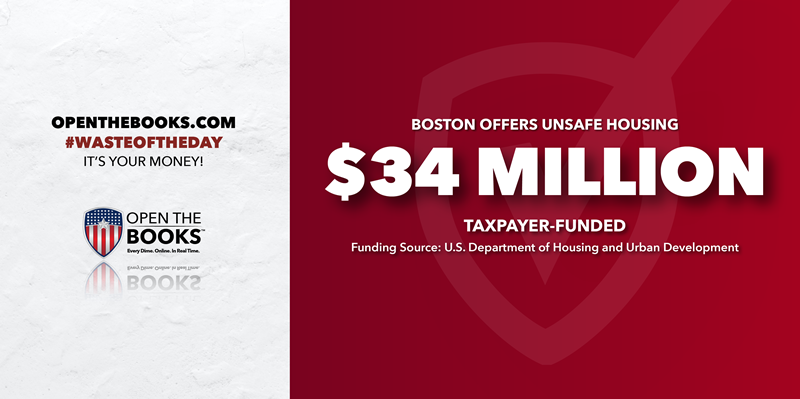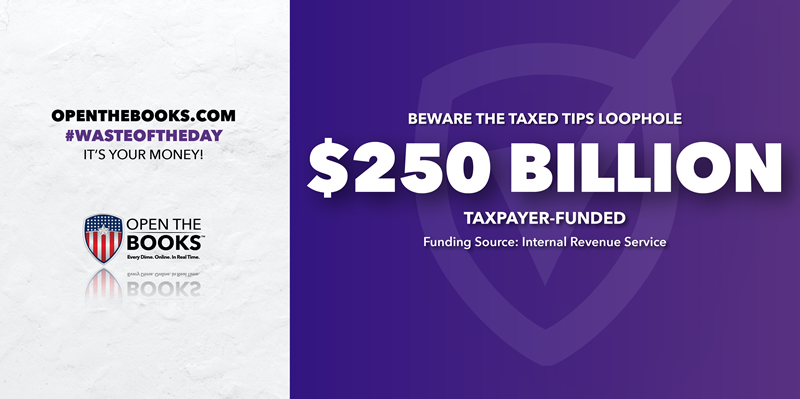
$8.3 Billion of Disaster Funds Stuck in Purgatory
September 9, 2024

Topline: The Federal Emergency Management Agency is refusing to help some local governments pay for storm recovery while its aid fund faces a $6.2 billion deficit. The White House keeps blaming Congress for not providing enough money, but the fiscal crisis is partially FEMA’s own fault.
FEMA has $8.3 billion in “unliquidated obligations” set aside to help victims of storms from before 2012, according to a Department of Homeland Security Office of Inspector General report titled “FEMA’s Inadequate Oversight Led to Delays in Closing Out Declared Disasters.” It is money that FEMA has promised to spend in the future, but it’s unclear when or if it will actually help American families.
Meanwhile, the money can’t be used to help victims of hurricanes from this summer.
Key facts: FEMA grants must be used before a “period of performance” deadline. If the deadline is extended, FEMA officials are supposed to provide a detailed written justification.
FEMA has recently extended deadlines by up to 16 years for $7 billion of grants, sometimes without explanation, according to the OIG report.
For example, FEMA set aside billions to help the Northeast recover from Hurricane Sandy in 2012. The money was supposed to be used up by October 2016, but FEMA extended the deadline to September 2026. $4.5 billion of it was still unused as of last year and is unavailable for victims of this year’s storms.
The extensions are awarded based on “subjective” criteria, the report says. Auditors wrote that “As a result, the potential risk for fraud, waste, and abuse increases the longer a program remains open.”
Even when extensions are not granted, FEMA does not always enforce its deadlines. There was $9.4 million set aside for grants with deadlines over 12 months ago as of June 2023, according to the report. FEMA recouped an additional $5.7 million while the audit was taking place.
Search all federal, state and local government salaries and vendor spending with the AI search bot, Benjamin, at OpenTheBooks.com.
Background: The inspector general report is the latest controversy in what has been a challenging year for FEMA. There were a record 28 storms that each caused over $1 billion in damages last year, and there have been 19 so far this year.
In July, the Government Accountability Office reported that FEMA greatly underestimated how much money it would need to spend on the Covid-19 pandemic and had not requested enough money from Congress over the last few years.
The agency’s Disaster Relief Fund nearly ran out of money this August, and FEMA was forced to pause 650 projects that were not deemed essential for “life-saving services.” The same thing happened in October 2023 and seven other times since 2001.
Yet FEMA continues to approve new expenses related to the Covid-19 pandemic, even though the public health emergency officially ended in May 2023.
Summary: There’s no use in obligating billions of dollars to help victims of natural disasters if the money is just going to sit in a bank account.
Most ICE Custody Deaths May Have Been Preventable
September 10, 2024

Topline: Taxpayers spent $400 million last year on medical services at U.S. Immigration and Customs Enforcement’s detention centers, but a new report shows that ICE isn’t always taking the steps necessary to care for those in its custody.
Forty-nine of the 52 deaths — 94 percent — reported by ICE detention centers from 2017 to 2021 were “preventable” or “possibly preventable,” according to medical experts working for the non-partisan Physicians for Human Rights. An additional 15 detainees died between 2021 and June 2024.
Key facts: Medical experts found that for 88 percent of the 52 deaths, ICE’s medical team “made incorrect, inappropriate or incomplete diagnoses.”
The report claims that ICE’s medical oversight is “critically flawed” because the agency does little to prevent future deaths or punish those responsible.
ICE has not terminated its contracts with any of the detention centers where deaths occurred, and only three were fined, according to the report, which was also conducted with the American Civil Liberties Union and American Oversight.
Meanwhile, the private prison companies that run most ICE detention centers continue to reap huge profits from the government. The corporate GEO Group made over $1 billion from ICE in 2022, and CoreCivic made $552 million, according to the report.
In two instances where officials tried to speak with eyewitnesses to on-site deaths, ICE released the witnesses from detention hours before their scheduled interviews. In two other cases, detention centers destroyed video evidence of detainees’ deaths, the report stated.
Another detainee said in Spanish that she “felt like she was dying,” but staffers mistranslated her pleas and thought she was going to commit suicide. They placed her in solitary confinement instead of sending her to a doctor, and she later died of liver failure.
At a facility in Michigan, one detainee collapsed on the floor of the medical wing. Video footage showed a nurse texting on her cellphone for almost three hours instead of checking on the man, who died of a gastrointestinal hemorrhage, the report stated.
Search all federal, state and local government salaries and vendor spending withthe AI search bot, Benjamin, at OpenTheBooks.com.
Background: ICE has a budget of $9.8 billion this year, of which $3.4 billion is for detaining and holding suspected illegal immigrants. The agency expects to hold 41,500 people in detention centers on any given day this year. During the Biden-Harris administration, nearly 10 million illegal entrants have crossed American borders.
Most medical care is provided by the ICE Health Service Corps, which had $352 million in funding last year, per budget documents. Another $47.8 million was spent on third-party medical services.
Summary: ICE’s budget should go toward initiatives that actually protect our border, and facilities that are incapable of caring for their detainees should be reformed or dumped.
Federal Funds Go to Unsafe Housing In Boston
September 11, 2024

Topline: The City of Boston is expected to spend $34 million in the next year to place low-income families in homes that are “not always decent, safe and sanitary,” according to a new report from the U.S. Department of Housing and Urban Development.
Key facts: The Housing Choice voucher program allows Boston and other cities around the nation to use federal funds on rent for needy families. Eligible homes must meet federal quality standards listed in the NSPIRE rule.
Federal auditors inspected 87 homes that Boston officials said were meeting the standards and found that 50 of them — 57 percent — had deficiencies such as electrical hazards, mice infestations, broken carbon monoxide detectors and staircases with missing stairs.\
Fifteen of the homes had “life-threatening” issues.
Inspectors found many hazards that were supposedly corrected but were still present. One apartment passed an inspection in March 2023 because Boston officials said mold and mildew had been removed from the bathtub, but federal inspectors said the mold was still there.
Cities in the federal housing program are required to test children living in homes with lead-based paint to make sure their blood does not contain elevated levels of lead. Boston officials said they were ignoring the law because they “did not have a firm understanding” of it.
Inspectors found 193 issues in total, 46 of which had still not been fixed as of April 2024.
Search all federal, state and local government salaries and vendor spending with the AI search bot, Benjamin, at OpenTheBooks.com.
Background: Some of the Boston Housing Authority’s electricians and carpenters made up to $230,000 last year with lots of overtime, according to records at OpenTheBooks.com. If the authority has enough in its budget for large overtime payments, it should also have enough money to improve its oversight process.
Meanwhile, some Boston hotels housing homeless families and migrants are billing the state $31 for a single meal.
Summary: Affordable housing should not be synonymous with unsafe housing. If taxpayers are on the hook for their city’s housing crisis, they should at least be getting their money’s worth.
Ending Taxes on Tips Could Lose $250 Billion of Tax Revenue
September 13, 2024

Topline: Donald Trump and Kamala Harris have both promised to end taxes on tip income, but the change could reduce federal revenue by $150 to $250 billion over the next 10 years, according to estimates from the Committee for a Responsible Federal Budget.
Key facts: The latest available IRS data shows that employees collected $38 billion in tips in 2018. Researchers estimated that tip income will be worth $700 billion to $900 billion from 2026 to 2035.
The dollar estimates assume that the definition of a “tip” won’t change. In reality, employers will likely try and reclassify other sources of revenue as tip income, researchers said.
Background: Trump first proposed eliminating federal taxes on tips at a June campaign event, promising that it will be the “first thing” he does in office. Sen. Ted Cruz introduced the No Tax on Tips Act days later, and Rep. Byron Donalds sponsored a companion bill in the House.
Those bills would only exempt tips from income tax, but the competing Tax-Free Tips Act of 2024, sponsored by Reps. Thomas Massie and Matt Gaetz, would also eliminate payroll taxes on tips.
Harris endorsed the idea in August.
Any policy that keeps taxpayers’ money in their own wallets is generally a good thing. However, only 2.5 percent of the workforce receives tips. Americans deserve widespread tax reform, not a plan that will benefit only a select few.
The plan is meant to help out middle-class workers, but that’s not a guarantee. More than a third of tipped workers don’t make enough to pay federal income tax. Others have their income tax offset by the Earned Income Tax Credit and the Child Tax Credit, the latter of which Harris has already promised to expand.
Brendan Duke of the Center for American Progress writes that benefits for low-wage workers would be “small or nonexistent” under the No Tax on Tips Act. Meanwhile, hedge fund managers could possibly “game the system” to reclassify their income as tips and save millions.
Search all federal, state and local government salaries and vendor spending with the AI search bot, Benjamin, at OpenTheBooks.com.
Summary: The only path toward solving the U.S. debt crisis is slashing government spending so that taxes can be lowered for Americans of all professions. Ending taxes on tips might generate flashy headlines, but it should not be a substitute for more substantial reform.
The #WasteOfTheDay is presented by the forensic auditors at OpenTheBooks.com.